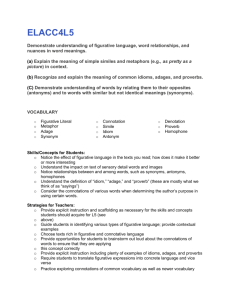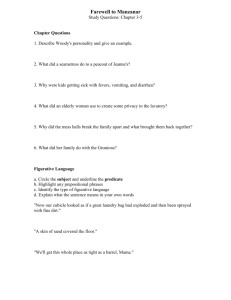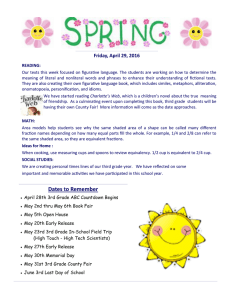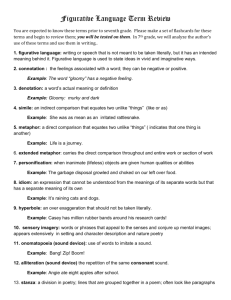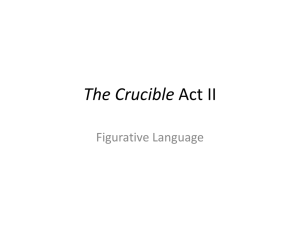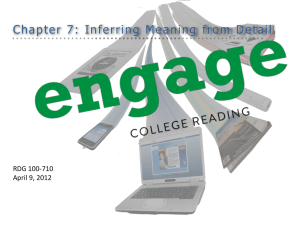elacc5l5
advertisement
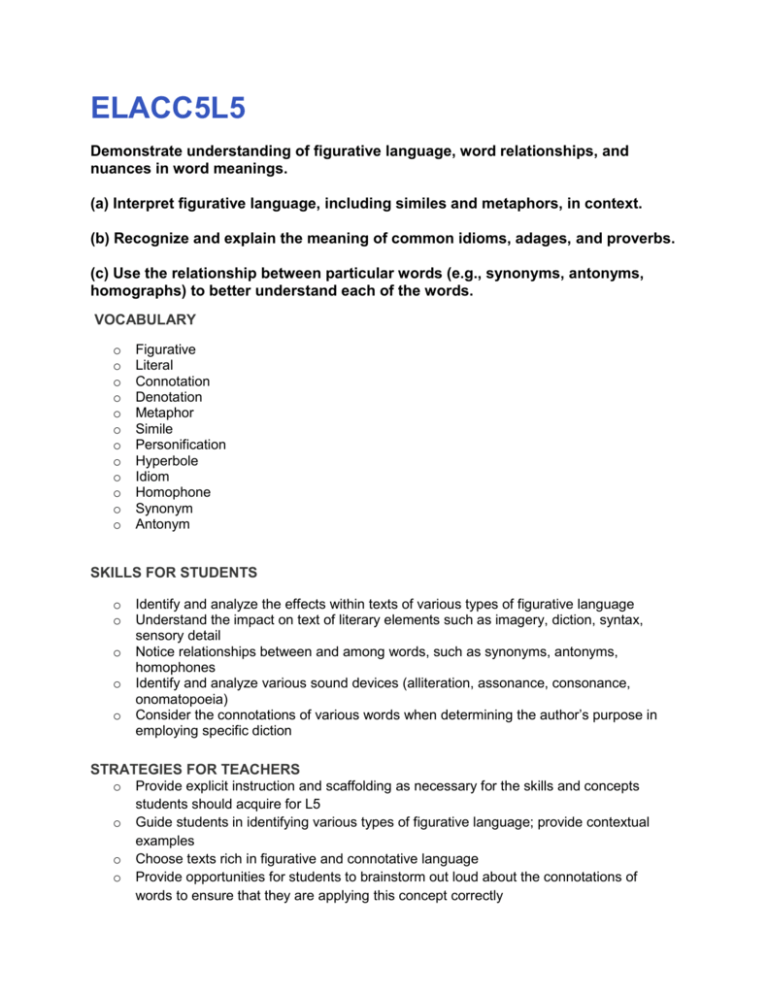
ELACC5L5 Demonstrate understanding of figurative language, word relationships, and nuances in word meanings. (a) Interpret figurative language, including similes and metaphors, in context. (b) Recognize and explain the meaning of common idioms, adages, and proverbs. (c) Use the relationship between particular words (e.g., synonyms, antonyms, homographs) to better understand each of the words. VOCABULARY o o o o o o o o o o o o Figurative Literal Connotation Denotation Metaphor Simile Personification Hyperbole Idiom Homophone Synonym Antonym SKILLS FOR STUDENTS o o o o o Identify and analyze the effects within texts of various types of figurative language Understand the impact on text of literary elements such as imagery, diction, syntax, sensory detail Notice relationships between and among words, such as synonyms, antonyms, homophones Identify and analyze various sound devices (alliteration, assonance, consonance, onomatopoeia) Consider the connotations of various words when determining the author’s purpose in employing specific diction STRATEGIES FOR TEACHERS o Provide explicit instruction and scaffolding as necessary for the skills and concepts students should acquire for L5 o Guide students in identifying various types of figurative language; provide contextual examples o Choose texts rich in figurative and connotative language o Provide opportunities for students to brainstorm out loud about the connotations of words to ensure that they are applying this concept correctly o o Require students to translate figurative expressions into concrete language and vice versa Practice exploring connotations of common vocabulary as well as newer vocabulary
